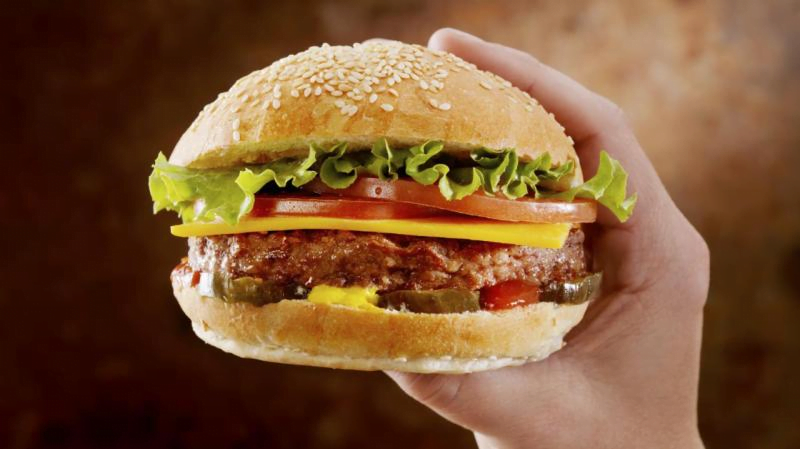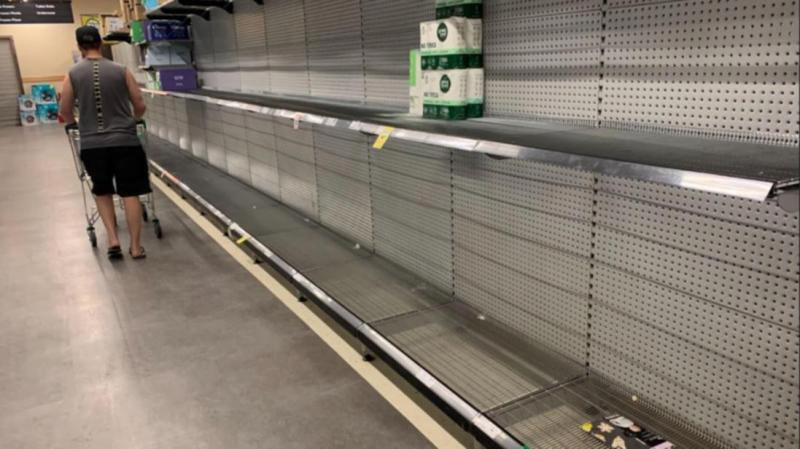Key points:
- Private investors have put at least $100m into the fast growing online grocery sector
- Analysts say it could be worth $2b within a few years
- The trend threatens the major supermarkets down to the humble corner store
For many years, the humble corner store has been a fixture of many suburbs and towns. But now start-ups headed by millennial entrepreneurs are piling cash into miniature shops that you cannot even go into.
Their sales pitch is the ultimate convenience – buying milk and bread almost instantly while never getting out of bed. Let alone your pyjamas.
“We’re a grocery delivery service,” Milkrun’s founder Dany Milham says.
“We have hubs all around the city that allow us to pick and pack your order. You can order anything [online] that you order at a grocery store or supermarket.
“And [we] deliver it to you in 10 minutes.”
Milkrun’s one of the biggest players in this space and, after pitching itself to investors, now has $86 million in capital behind it.
In just six months, it’s used that cash to open more than 40 so-called “dark supermarkets” across Sydney.
It’s also just launched one in Melbourne, making it the first of its kind to break into two major capital city markets.
The company is pinning its hopes on a consumer trend that’s been exacerbated by the pandemic.
“Everyone’s moving towards buying stuff online. It’s just taken a while for the grocery industry to catch up,” Milham says.
“It’s kind of strange that we buy everything online but we still drive down to a supermarket.”
How do tech companies deliver groceries in 10 minutes?
Milkrun’s not the only start-up launching grocery hubs in Australia.
Voly and Send are two other companies racing into the market. Both have also secured smaller amounts of capital investment.
The companies are all pitching themselves on quick delivery – within half an hour.
That compares to 60 minutes or even next-day delivery largely offered until now by the major supermarkets. At various times during the pandemic, Woolworths delivery times were even several days after ordering.
To beat the clock, the tech start-ups are opening small distribution centres stocked with groceries in mostly inner-city locations. Only people who live near them can put in orders.
“And as soon as you put an order through, we have two minutes to pick and pack,” Milham says.
“And then we have eight minutes to deliver.
“We work extremely, extremely fast.”
Milham says one of the keys to this Amazon-like process is having internally employed delivery riders who are always on stand-by in their hubs.
This compares to the gig economy model championed by Uber, which relies on freelancers who may not always be around the corner.
What people are ordering and when
Voly’s most popular item is a carton of eggs.
“People seem to love fresh eggs in the morning,” Voly’s co-founder Mark Heath says.
“I think people forget them. They wake up in the morning a bit groggy and that’s when we’re there for you.
“But it’s not just fresh eggs. We very seldom see that being a one item basket. It comes with a lot of other things.”
His company is pitching itself as a mid-week supermarket shop alternative, however Barrenjoey found the sector overall is more of a threat to the convenience sector.
Heath thinks customer patterns have fundamentally changed, especially during the pandemic, and people no longer want to spend their Sundays shopping for the week.
“Walking up and down supermarket aisles isn’t exactly what people want to do. So they’ll switch to a service like ours,” Heath says.
This trend could steal 15 per cent of the grocery market
Neither Voly nor Milkrun are actually profitable yet.
Unlike physical stores, these companies have reduced rents, which keeps down costs. But they also don’t have the buying power of the supermarket chains.
“We’re about 10 per cent more expensive than Coles,” Voly’s Mark Heath says.
A recent paper by equity research company Barrenjoey looked at how these apps’ prices compare to the established supermarkets.
It found basics that people tend to buy often, like milk and bread, were comparable with the supermarkets. Yet more speciality items, like strawberries, were far more expensive.
“Our analysis of pricing on a small range of products shows that immediacy players tend to sell at a roughly 10 to 30 per cent premium, with premiums ranging dependent on the item,” it found.
“Although the offering is capital-light, we highlight that significant start-up losses will need to be funded.”
Barrenjoey concluded that this new sector’s profitability will come down to building up a vast network.
“I don’t think it’ll be profitable for a number of years,” Barrenjoey’s analyst Tom Kierath says.
“That’s because it takes time to scale. And with most of these online markets, there tends to be one or two players, but here we’ve got a number of players at the moment.
“These companies are replicating what they’ve seen overseas.”
Milkrun’s Dany Milham acknowledges that it’ll take scale to reach profitability. He’s also dipping into in-house or private label groceries to improve margins.
“We’ve got a range coming out with individual products that they’ll be launching soon,” he says.
“That’s quite an easy path to go down without price gouging.”
If the sector takes off, Barrenjoey’s research concludes it will have a “profound” effect.
It estimates it could potentially steal 10 to 15 per cent of the grocery market off established players by 2025. That would make it worth $1.5 to $2 billion.
“Some of that will come out of the supermarkets. That’s for sure,” Barrenjoey’s Tom Kierath says.
How are supermarkets fighting back?
The major supermarkets aren’t sitting idle.
This month Coles and Woolworths both posted company results that outlined how they’re pushing further into online grocery shopping and home delivery.
Coles says it grew its online sales by 8.2 per cent last half, and it now has same-day delivery from 500 stores nationally.
It’s also teaming up with a tech company Ocado to build warehouses staffed by robots for online deliveries. It expects these to launch by 2024.
Meanwhile, competitors Woolworths and IGA are both teaming up with existing delivery apps to get groceries to people sooner.
The likes of Menulog and UberEats have, until now, been largely associated with takeaway food.
But just this month – in a sign of how fast things are moving – Menulog also announced it’s partnering with hundreds of petrol stations and IGA supermarkets nationally, including in regional Australia.
“We’re seeing exponential demand for convenience and grocery deliveries across all parts of Australia,” Menulog’s managing director Morten Belling says.
Woolworths last year launched a similar partnership with Uber at 60 of its stores nationally. Its pitch is delivery within 60 minutes.
“That’s getting a very strong resonance,” Woolworths’ chief executive Brad Banducci says.
Another tech start-up Aircart is about to launch in partnership with an existing retailer that it can’t yet reveal. Its model involves sending personal shoppers into supermarkets who then also deliver it.
Like Menulog and Uber, it’ll pay those shoppers under the gig economy model, where they’re paid as freelancers for each delivery.
“The supermarkets provide a rebate to us for the services that we provide,” Aircart’s founder Haddon Dixon says.
“There’s also a small suitable delivery fee paid by either consumers or the retailers in some unique circumstances.
“We’re more geared towards the weekly type of shop where people are purchasing their groceries and for their kids’ breakfasts and lunches the next day.”
The big loser could be the humble corner store
Barrenjoey’s Tom Kierath believes that while supermarket chains have reason to be worried about more competition, the biggest threat is to convenience stores like 7-Eleven or the local milk bar.
Ahmed Shrif owns a small corner store in inner-city Sydney called Chippendale Scoop.
He relies on local residents popping down to his store for milk and other discretionary items and he says the rise of dark supermarkets like Milkrun will impact his business if they take off.
“We’re trying to beat them but we can’t because they’re big businesses,” Shrif says.
To fight back, the store owner has been using existing delivery apps like Menulog and UberEats to get his groceries to customers quickly.
But these apps also take a cut of his takings. That might be something IGA is willing to absorb to stay relevant but for Mr Shrif, it poses a big conundrum.
“They’re taking a big chunk of the profit,” he says.
“We have to increase our products price to balance it out.”
Mr Shrif is currently designing his own delivery app, which would save on overheads. He hopes its personal touch will also resonate with his local customers.
“Our regulars always come to us,” he says.
“We want them to always come to our business because without them we can’t survive.”
Extracted from ABC


